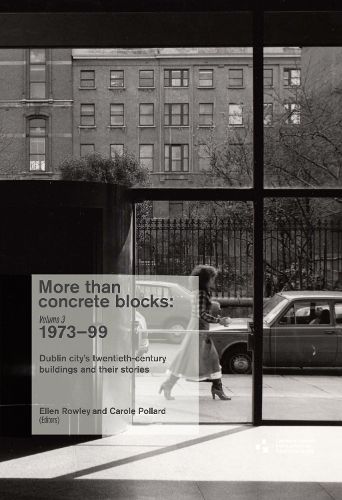Readings Newsletter
Become a Readings Member to make your shopping experience even easier.
Sign in or sign up for free!
You’re not far away from qualifying for FREE standard shipping within Australia
You’ve qualified for FREE standard shipping within Australia
The cart is loading…






A three-volume series of richly illustrated books unpacking the history of Dublin's architecture during the twentieth century.
This three-volume series considers the city as a layered and complex place. It makes links between Dublin's buildings and Dublin's political, social, cultural, and economic histories. By focusing on architecture as the central thread in the story of the city in formation, 1900-2000, More Than Concrete Blocks is about the relationship between architecture and people in Dublin City.
Each study is framed according to key historical questions and raises issues around architectural technology and materials, patronage, economic histories, urban planning, residents and ceremonial or daily use, and so on. Volume Three also presents an overview, in guidebook style, of 140 sites, a survey of the city's buildings over the period 1973 to 1999, not as a "best of" but as a representation of architectural endeavor at the time.
The series was commissioned and funded by Dublin City Council's Heritage Office and has received grant support from the Heritage Council and from the Department of Housing Local Government and Heritage.
$9.00 standard shipping within Australia
FREE standard shipping within Australia for orders over $100.00
Express & International shipping calculated at checkout
A three-volume series of richly illustrated books unpacking the history of Dublin's architecture during the twentieth century.
This three-volume series considers the city as a layered and complex place. It makes links between Dublin's buildings and Dublin's political, social, cultural, and economic histories. By focusing on architecture as the central thread in the story of the city in formation, 1900-2000, More Than Concrete Blocks is about the relationship between architecture and people in Dublin City.
Each study is framed according to key historical questions and raises issues around architectural technology and materials, patronage, economic histories, urban planning, residents and ceremonial or daily use, and so on. Volume Three also presents an overview, in guidebook style, of 140 sites, a survey of the city's buildings over the period 1973 to 1999, not as a "best of" but as a representation of architectural endeavor at the time.
The series was commissioned and funded by Dublin City Council's Heritage Office and has received grant support from the Heritage Council and from the Department of Housing Local Government and Heritage.